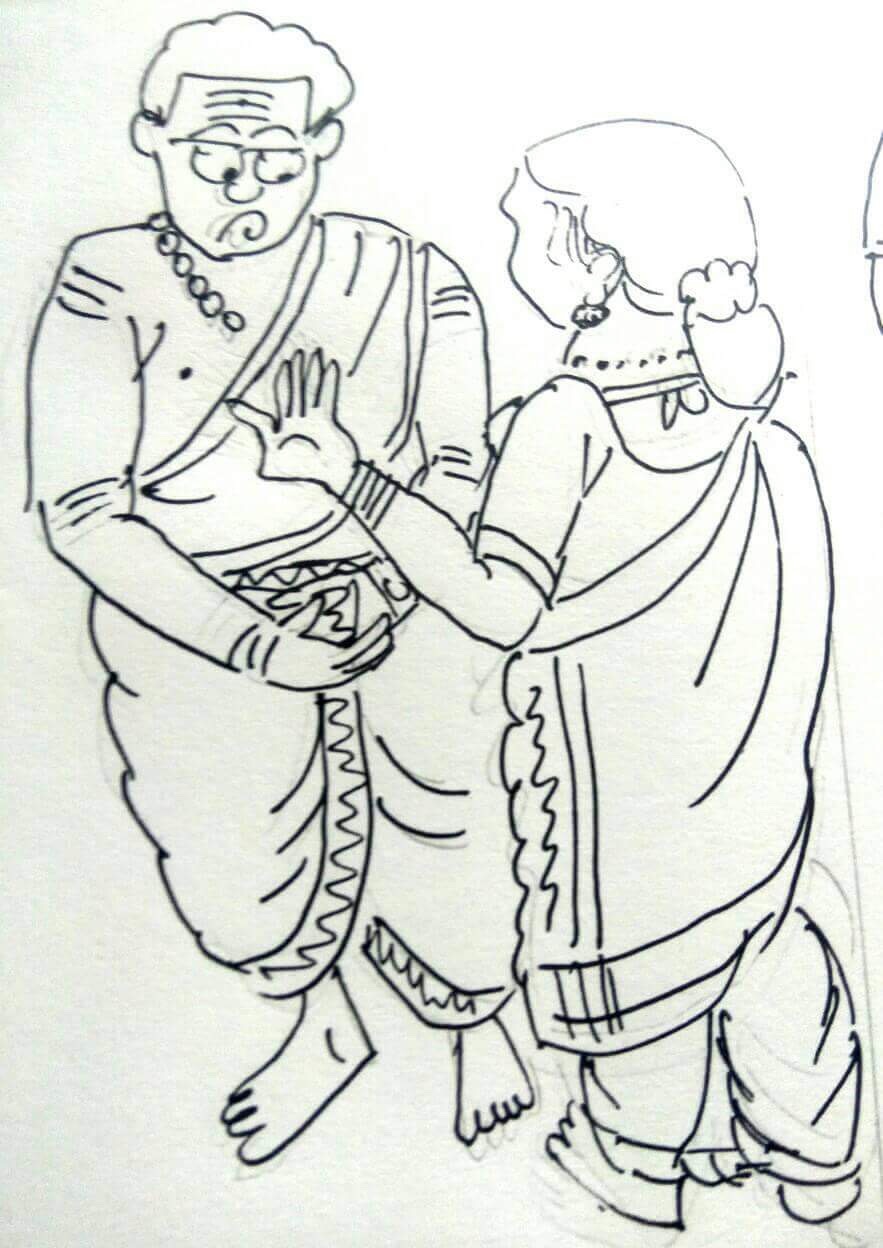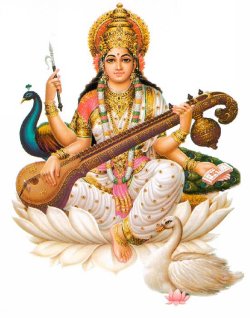Madana Mohanashtakam
————————————
‘Madana mohanastakam’ is really ‘mohanam’, a lovely prayer song. You can sing the melody and forget yourself, forget the world around, while at home or in a lonely forest or under a moonlit sky or in the pouring rain.
In the ‘karaavalamba stotram’, we seek Narasimha’s hands for our rescue, whereas in Madana Mohanashtakam, we seek Sree Krishna’s feet. The eight slokas are simple, sincere and a heart -to heart appeal to the Divinity.
“Anthimabaandhava ( slokam 4 ) -Bagavan, you are my last bandhu, the only remaining relative, my last resort, who will be with me till my last breath” – what a cordiality between the Creator and the created!
—————————————————————————————————————-
Madana Mohana Ashtakam
श्रीमदनमोहनाष्टकम्
जय शंखगदाधर नीलकलेवर पीतपटाम्बर देहि पदम् ।
जय चन्दनचर्चित कुण्डलमण्डित कौस्तुभशोभित देहि पदम् ॥१॥
जय पंक्कजलोचन मारविमोहन पापविखण्डन देहि पदम् ।
जय वेणुनिनादक रासविहारक वंक्किम सुन्दर देहि पदम् ॥२॥
जय धीरधुरन्धर अद्भुतसुन्दर दैवतसेवित देहि पदम् ।
जय विश्वविमोहन मानसमोहन संस्थितिकारण देहि पदम् ॥३॥
जय भक्तजनाश्रय नित्यसुखालय अन्तिमबान्धव देहि पदम् ।
जय दुर्जनशासन केलिपरायण कालियमर्दन देहि पदम् ॥४॥
जय नित्य निरामय दीन दयामय चिन्मय माधव देहि पदम् ।
जय पामनपावन धर्मपरायण दावनसूदन देहि पदम् ॥५॥
जय वेदविदावर गोपवधूप्रिय वृन्दावनधन देहि पदम् ।
जय सत्यसनातन दुर्गतिभञ्जन सज्जनरञ्जन देहि पदम् ॥६॥
जय सेवकवत्सल करुणासागर वाच्छित पूरक देहि पदम् ।
जय पूतधरातल देवपरात्पर सत्वगुणाकर देहि पदम् ॥७॥
जय गोकुलभूषण कंसनिषूदन सात्वतजीवन देहि पदम् ।
जय योगपरावण संसृतिवारण ब्रह्मनिरञ्जन देहि पदम् ॥८॥
Jaya, samkhagadhadhara, neelakalevara, peethapatambhara dehi padam,
Jaya chandanacharchitha, kumdalamanditha, kousthubha sobhitha dehi padam. 1
Jaya pamkajalochana, maaravilochana, paapavikhandana dehi padam
Jaya venuninadaka, raasavihaaraka, vamkima sunmdara dehi padam 2
Jaya dheera durandhara albudhasumdhara deivathasevitha dehi padam
Jaya viswavimohana, maanasa mohana, samsthithikaarana dehi padam 3
Jaya bakthajanaasraya,nithyasukhalaya, anthimabaandhava dehi padam
Jaya durjanasaasana, keliparaayana, kaaliyamardhana dehi padam 4
Jaya nithya niraamaya, deena dayaamaya, chinmaya, Maadhava dehi padam
Jaya paamarapaavana, dharmaparaayana, dhanava soothana dehi padam 5
Jaya vedavidamvara, gopavadoopriya, vrindaavanadhana dehipadam
Jaya sathya sanathana, durgathibanjana, sajjanaramjitha dehi padam 6
Jaya sevaka valsala, karunasakara, vaanjithaporaka dehipadam
Jaya poothadharadhala, devaparatpara, sathvagunaakara dehi padam 7
Jaya gokulabooshana, kamsa nishoodhana, saathvatha jeevana dehi padam
Jay yogaparaayana, samskrithi vaarana ,Brahmaniranjana dehi padam 8





